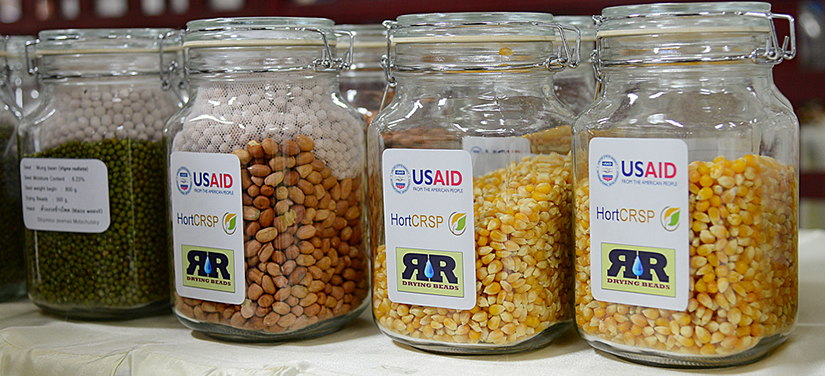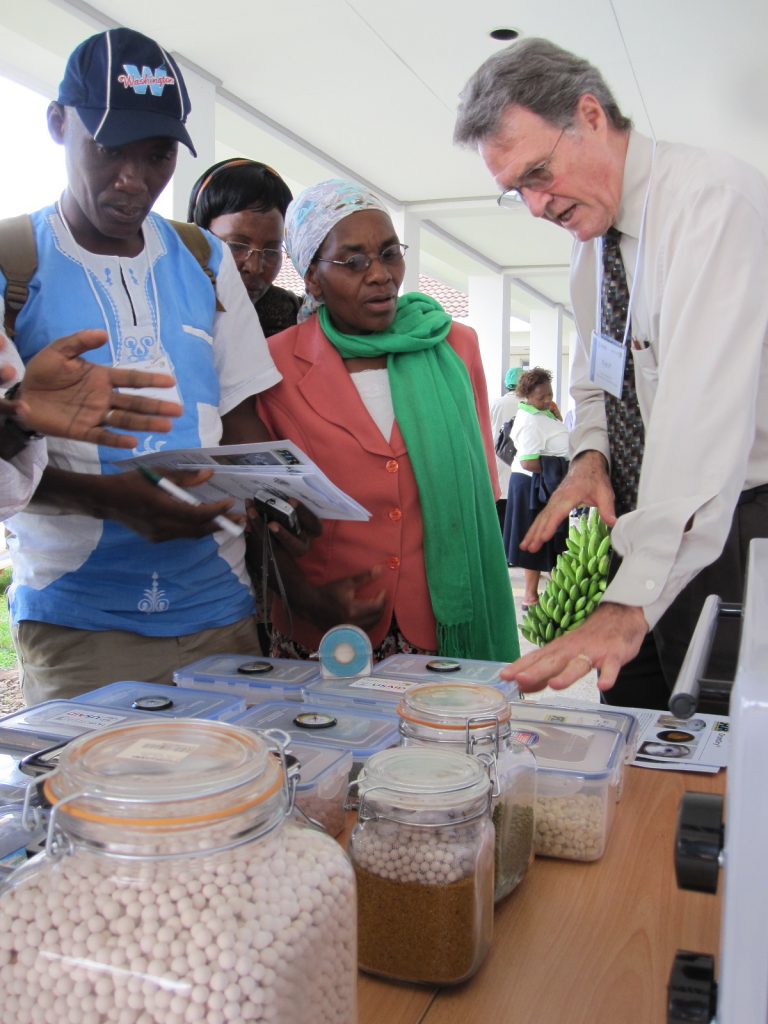
A version of this article originally appeared in the Feed the Future newsletter.
A partnership between university scientists and a private technology company has sprouted both new concepts and new tools that can help vegetable farmers in developing countries access better seeds.
For many smallholder farmers, buying and trading vegetable seeds can be risky. The benefits of purchasing seed can be high, with improved crop varieties offering disease resistance, increased vigor and improved taste. But the risks of receiving poor-quality seed are also significant, particularly in tropical climates. Seed will deteriorate rapidly if it is not properly dried and stored. The resulting poor germination reduces yields, which for vegetable farmers can mean staggered harvests and inconsistent crop quality.
“If you buy seed and it’s all dead, you aren’t going to buy very much more seed,” says Kent Bradford, seed biologist at the University of California, Davis. “To get improved varieties into farmers’ hands, you must have a system where people can buy and trade seed successfully.”
Under the Horticulture Innovation Lab, Bradford and an international team have partnered with Rhino Research, a seed technology company in Thailand, to improve the science and tools available for drying and storing vegetable seed. The team initially sought to better maintain seed quality by exploring zeolite-based “drying beads.”

Produced by Rhino Research, the drying beads absorb moisture from the air. When sealed with seeds in an airtight container, the beads reduce the seeds’ moisture content to very low levels. They can be re-used repeatedly, after being reactivated in an oven.
In Thailand, India, Nepal and Bangladesh, the team developed protocols for how to best use drying beads with vegetable seed and trained more than 3,600 people in their use. The team’s preliminary economic analyses showed that using drying beads could increase earnings within the onion seed industry in Nepal by an additional $5.85 million per year.
But working with smallholders in developing countries presented additional challenges. While the cost of drying beads can be recovered through repeated use, the up-front costs were not reasonable for many small-scale farmers. Accustomed to working with seed companies, the team also assumed the importance of drying seeds was “fairly common knowledge,” but quickly learned that was not the case.
“But when we started talking in terms of the ‘dry chain’ for seeds, then the idea clicked,” Bradford says. “When we compare the importance of drying seeds and keeping them dry throughout storage to the ‘cold chain’ [i.e. keeping perishable goods cold during storage and transport], then our ability to communicate with people goes up.”
A “dry chain” requires that seed be dried, and the dryness monitored and maintained throughout all stages of storage. Many actors along the seed dry chain—from seed production to storage, transportation, sales and on-farm use—need to maintain that dryness to ensure seed quality.
Following the new dry chain concept, the Horticulture Innovation Lab team also developed a suite of tools appropriate for the different participants along the chain, using what they learned from working with the drying beads. The team’s next steps will begin with a commercial-scale drying system—the FlexiDry, which also uses drying beads—and continue down the dry chain to small containers with inexpensive sensors that enable farmers to maintain and monitor dryness during seed storage.
